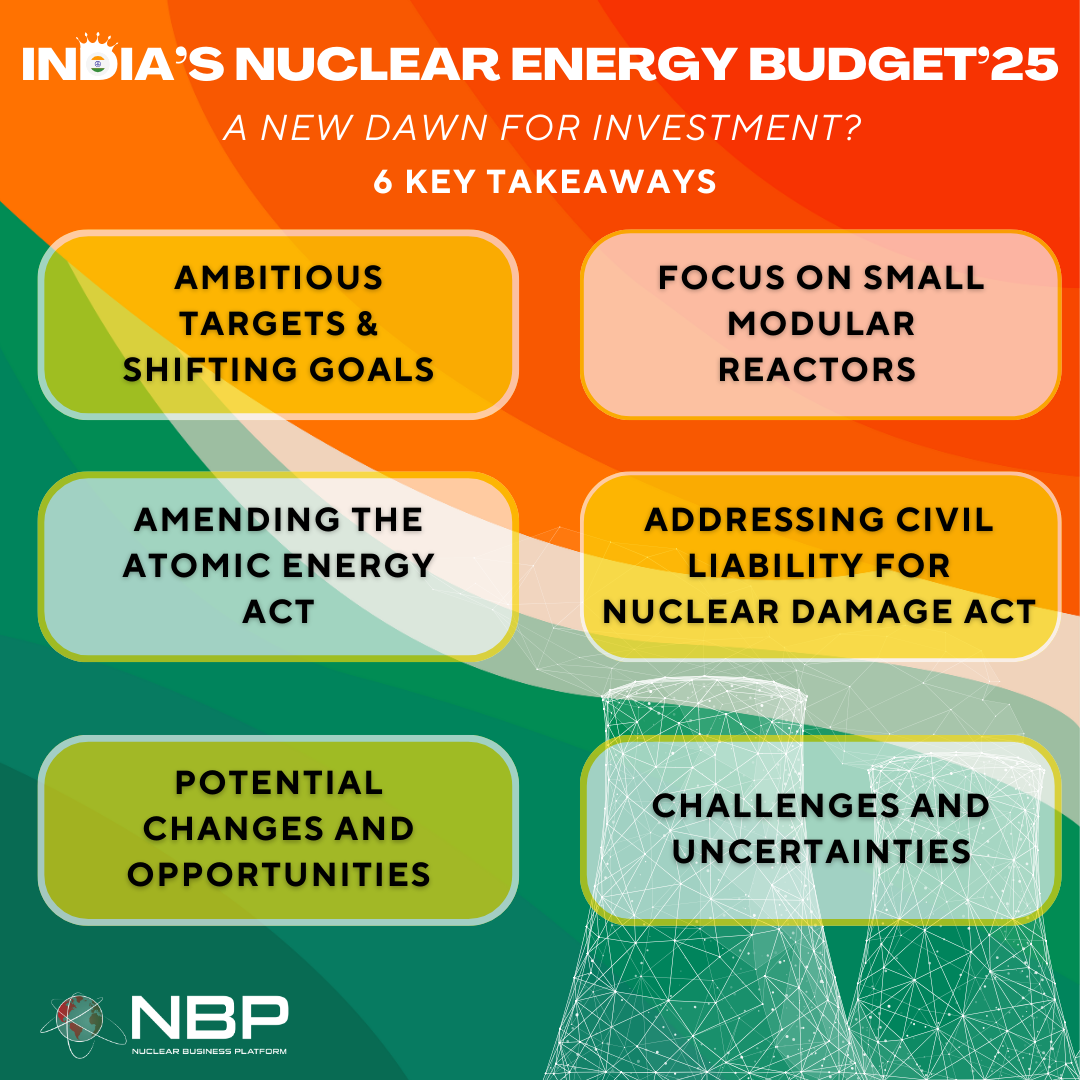India's Nuclear Energy Budget 2025: A Bold Leap Forward
India's 2025 budget has put a spotlight on the nuclear energy sector, with significant announcements aimed at accelerating its growth and opening up new opportunities for private and foreign investment. Let's break down the key takeaways and potential implications for international stakeholders.
Ambitious Targets and a New Nuclear Energy Mission
The government has reiterated its ambitious target of achieving 100 GW of installed nuclear power capacity by 2047, backed by a new Nuclear Energy Mission with an outlay of ₹20,000 crore (approximately $2.4 billion). This mission will focus on research and development of Small Modular Reactors (SMRs) and aims to operationalize at least five indigenously developed SMRs by 2033.
However, it's worth noting that India's nuclear power capacity targets have seen significant fluctuations in recent years. Previous targets of 35 GW by 2022 and 63 GW by 2032 were revised downwards to 22,480 MW by 2031-32. Currently, India has 8,180 MW of nuclear power capacity. The new target implies a significant ramp-up of capacity, requiring an addition of 77,520 MW in 25 years—a considerable challenge based on India's historical track record.
Focus on Small Modular Reactors (SMRs)
The budget speech highlighted the government's plan to operationalize five Small Modular Reactors (SMRs) by 2033. This could involve both indigenous designs, referred to as Bharat Small Reactors (BSRs), and potentially international collaboration. India has significant expertise in Pressurized Heavy Water Reactors (PHWRs), with 20 in operation, offering a strong foundation for developing and potentially exporting SMR technology. Additionally, SMRs could be designed to utilize thorium-based fuels, aligning with India's vast thorium reserves of a million tons.
Amending the Atomic Energy Act
To facilitate private sector participation in nuclear energy, the government intends to amend the Atomic Energy Act. This move is expected to open up new avenues for investment and collaboration in building and operating nuclear power plants. Amending the Atomic Energy Act may see PSU Nuclear Power Corporation of India losing its position as the sole operator of nuclear reactors in the country, making space for private sector operators.
Addressing the Civil Liability for Nuclear Damage Act
The budget also proposes amending the Civil Liability for Nuclear Damage Act, a contentious issue that has deterred foreign investment due to concerns over supplier liability in case of accidents. The current Act caps the operator's liability at ₹500 crore (approximately $60 million), with the government covering any excess. The proposed amendment could involve raising or removing this cap, potentially aligning with international conventions like the Convention on Supplementary Compensation (CSC) for Nuclear Damage. The CLNDA has been the biggest impediment to private sector participation due to a provision that pins liabilities on nuclear suppliers in addition to the operator in case of nuclear damage.
Potential Changes and Opportunities
These budget announcements signal a potential shift in India's nuclear energy landscape. The focus on SMRs, coupled with the amendment of the Atomic Energy Act, could attract significant private investment and international collaboration. The potential amendment of the Civil Liability for Nuclear Damage Act could alleviate concerns for foreign suppliers, further boosting investment.
Challenges and Uncertainties
Despite these positive developments, challenges remain. The ambitious capacity targets require a significant acceleration of project implementation. The details of the Nuclear Energy Mission and the specific amendments to the Atomic Energy Act and the Civil Liability for Nuclear Damage Act are yet to be finalized, creating some uncertainty.
Conclusion
India's nuclear energy budget presents a dynamic landscape for potential investors. The government's commitment to expanding nuclear capacity and facilitating private sector participation is encouraging. However, navigating the evolving regulatory landscape and addressing the challenges of project implementation will be crucial for successful investment in India's nuclear future.



